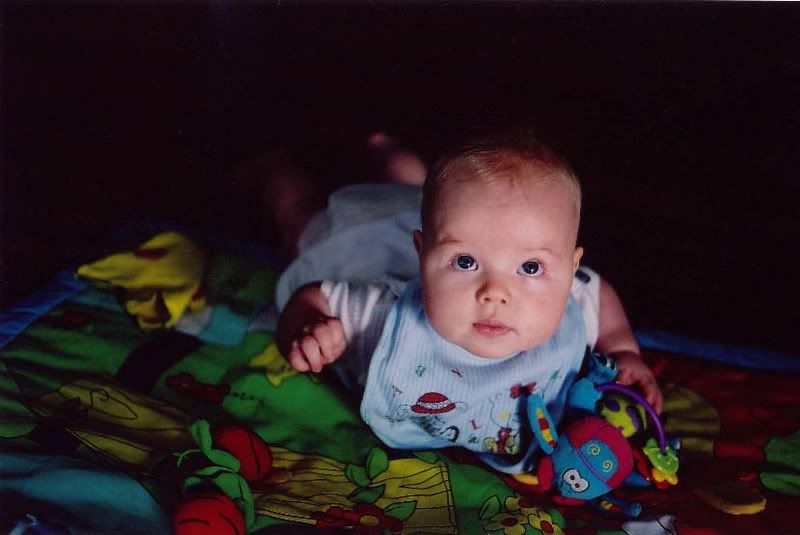M4cr0s
Back In Black
Hi all!
My first post here on this great forum, and it's a bit long and tedious too.. Hope I didn't post in the wrong category at least 😉
I recently aquired a 7s through the 'bay because I want to play a bit around with film, and because rangefinders intrigue me. The seller didn't know squat about cameras (why is it that like 90 % of the peeps selling cameras on Ebay doesn't seem to know anything about cameras, are they all the same guy under different nicks or something?) but I took a chance and got it for little more than 10$, thinking that if it didn't work it'd at least look good on the shelf 😉
The camera is in fact close to what I'd call mint, except of two minor wear marks on the extreme edges of the film-hatch at the back. The included half-case on the other hand looks like it's gone through a couple of wars 😉 Shutter works smoothly, but I can't really test the speeds, except by visual. Both the aperture blades and the shutter's move very nicely. Also the self-timer works. Viewfinder is a little bit dim, but appears pretty clean. The lens is completely scratch-free, a few tiny specks of dust inside, only seen if you use a flashlight. Actually my Nikon and Tammy zoom-lenses looked worse fresh from the factory, can't understand why they don't assemble lenses in a dust-free enviroment.. On the other hand, zooms push and pull air in and out of the lens/sensor chamber regardless, so maybe it doesn't matter. The meter works/responds, as I'm hearing-impaired I actually had a pack of old 675s (expired back in july 2008, something that might affect things) lying around and while these don't make a perfect fit, they do seem to at least power the meter.
Now, I've primarly worked with DSLRs and digi compacts and I haven't got much experience with older cameras and their metering, except some fidling in my youth with my dad's old Petri FT and the needle-system it had. I have no idea of how the meter of the 7s in fact works and in what way it differs from "modern" in-camera metering. It can't really be comparable to any modern metering technologies such as spot, CW or matrix, since these, as far as I understand, measures the light bouncing off whatever you try to meter. The 7s on the other hand, has an "eye" that measures the light hitting it, no?
When trying to match meter readings compared to my DSLR, the 7s often suggest quite different exposures (up to 1-3 full stop difference) and that is a bit worrying. I know different metering systems give different results and that there's normally a certain amount of technique/know-how about the metering system involved in making correct exposures. Also, as far as I understand, expecially color neg film have quite a bit of latitude and is a bit more forgiving than digital. Should I worry about the metering differences, or just go out shooting. Alternatively, just go sunny 16?
I hope someone has the patience to answer a rangefinder/film n00b and enlight me a little bit. If you have tips or tricks concerning exposure with these neat little machines I'd be very happy to receive them.
/Mac
My first post here on this great forum, and it's a bit long and tedious too.. Hope I didn't post in the wrong category at least 😉
I recently aquired a 7s through the 'bay because I want to play a bit around with film, and because rangefinders intrigue me. The seller didn't know squat about cameras (why is it that like 90 % of the peeps selling cameras on Ebay doesn't seem to know anything about cameras, are they all the same guy under different nicks or something?) but I took a chance and got it for little more than 10$, thinking that if it didn't work it'd at least look good on the shelf 😉
The camera is in fact close to what I'd call mint, except of two minor wear marks on the extreme edges of the film-hatch at the back. The included half-case on the other hand looks like it's gone through a couple of wars 😉 Shutter works smoothly, but I can't really test the speeds, except by visual. Both the aperture blades and the shutter's move very nicely. Also the self-timer works. Viewfinder is a little bit dim, but appears pretty clean. The lens is completely scratch-free, a few tiny specks of dust inside, only seen if you use a flashlight. Actually my Nikon and Tammy zoom-lenses looked worse fresh from the factory, can't understand why they don't assemble lenses in a dust-free enviroment.. On the other hand, zooms push and pull air in and out of the lens/sensor chamber regardless, so maybe it doesn't matter. The meter works/responds, as I'm hearing-impaired I actually had a pack of old 675s (expired back in july 2008, something that might affect things) lying around and while these don't make a perfect fit, they do seem to at least power the meter.
Now, I've primarly worked with DSLRs and digi compacts and I haven't got much experience with older cameras and their metering, except some fidling in my youth with my dad's old Petri FT and the needle-system it had. I have no idea of how the meter of the 7s in fact works and in what way it differs from "modern" in-camera metering. It can't really be comparable to any modern metering technologies such as spot, CW or matrix, since these, as far as I understand, measures the light bouncing off whatever you try to meter. The 7s on the other hand, has an "eye" that measures the light hitting it, no?
When trying to match meter readings compared to my DSLR, the 7s often suggest quite different exposures (up to 1-3 full stop difference) and that is a bit worrying. I know different metering systems give different results and that there's normally a certain amount of technique/know-how about the metering system involved in making correct exposures. Also, as far as I understand, expecially color neg film have quite a bit of latitude and is a bit more forgiving than digital. Should I worry about the metering differences, or just go out shooting. Alternatively, just go sunny 16?
I hope someone has the patience to answer a rangefinder/film n00b and enlight me a little bit. If you have tips or tricks concerning exposure with these neat little machines I'd be very happy to receive them.
/Mac
Last edited:




